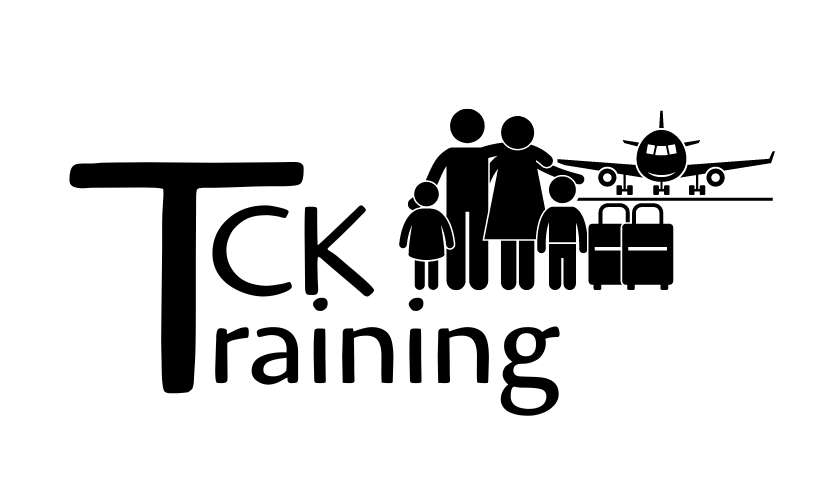How Many Years Abroad is Safe for Kids?
“How many years abroad is safe for kids?”
This is a question we have been asked many times at TCK Training – at what point do families need transition prep and repatriation support? How many years overseas is safe? At what point does it become dangerous?
I only lived outside my passport country for two years as a teenager. Speaking from personal experience, I had a rocky entry to life there and a rocky re-entry to my passport country. But I can’t speak for everyone. So when TCK Training did our survey of Adverse Childhood Experiences among globally mobile TCKs, one of the questions we asked was “How many years did you live outside your passport country?” And now we have some answers.
Our latest white paper, Sources of Trauma in International Childhoods: Providing Individualized Support to Increase Positive Outcomes for Higher Risk Families, contains ten ‘mini-papers’ looking at different factors in the lives of TCKs and how they impacted Adverse Childhood Experiences. The first factor we looked at was length of time lived abroad.
As we analyzed the data, something quickly became clear. Those who spent the least time outside their passport countries had the highest ACE scores. That is to say, living a shorter period of time abroad was associated with higher levels of abuse and neglect.
Specifically, when looking at TCKs born after 1980 (Millennials and Gen Z) we find:
This is a question we have been asked many times at TCK Training – at what point do families need transition prep and repatriation support? How many years overseas is safe? At what point does it become dangerous?
I only lived outside my passport country for two years as a teenager. Speaking from personal experience, I had a rocky entry to life there and a rocky re-entry to my passport country. But I can’t speak for everyone. So when TCK Training did our survey of Adverse Childhood Experiences among globally mobile TCKs, one of the questions we asked was “How many years did you live outside your passport country?” And now we have some answers.
Our latest white paper, Sources of Trauma in International Childhoods: Providing Individualized Support to Increase Positive Outcomes for Higher Risk Families, contains ten ‘mini-papers’ looking at different factors in the lives of TCKs and how they impacted Adverse Childhood Experiences. The first factor we looked at was length of time lived abroad.
As we analyzed the data, something quickly became clear. Those who spent the least time outside their passport countries had the highest ACE scores. That is to say, living a shorter period of time abroad was associated with higher levels of abuse and neglect.
Specifically, when looking at TCKs born after 1980 (Millennials and Gen Z) we find:
- 21% of those who lived abroad 0-3 years were physically abused at home, compared to 15% of those who lived abroad 16-18 years.
- 15% of those who lived abroad 0-3 years reported physical neglect, compared to 8% of those who lived abroad 16-18 years.
- 49% of those who lived abroad 0-3 years reported emotional neglect, compared to 37% of those who lived abroad 16-18 years.
- 28% of those who lived abroad 0-3 years had a high-risk ACE score, compared to only 15% those who lived abroad 16-18 years.
Our findings did not show as strong of a change in the statistics for emotional and sexual abuse for TCKs who lived abroad 0-3 versus 16-18 years, but the numbers did go down 3 to 4%.
What does this mean?
These numbers demonstrate correlation, not causation. We cannot look at this and say that staying overseas a long time causes healthy families. But we can say that a higher percentage of families who lived overseas a long time were healthier. In the rest of this post we will look at three potential factors related to this, as well as what we can do about it.
Transition is hard
Every location move is a big transition and a disruption to both family life and peer relationships. We previously noted a correlation between high mobility and high-risk ACE scores (see our paper Caution and Hope for more on this). Those who spend a short time overseas are likely to have made two international moves in a short period of time – a high level of transition and disruption. These ‘short term’ families are therefore in more need of transition and repatriation support, not less!
Expat life brings out the hard stuff
Good expat preparation tells individuals and couples to prepare for the hardest parts of their personal lives to go into overdrive due to the stress of transition and intercultural living. Some families discover that the stress of this life is not good for them and choose to return to their passport countries. TCKs who lived their entire lives outside their passport countries are more likely to belong to healthy families, as these families are more likely to choose to stay abroad.
We can’t blame it on external trauma
Another reason that families may not spend their children’s whole childhood abroad is if a traumatic event takes place. Yet TCKs who lived abroad 13-18 years were more likely to report experiencing or being impacted by a violent event than those who spent 0-6 years abroad.
Our hypothesis here is that when families have strong communities in which they are supported, giving them personal support to parent well and family support through difficult situations, they are healthier overall. This is better for the family long term than going through an additional transition (with accompanying dislocation and disruption) to receive care elsewhere.
What does ‘safe’ look like?
This data shatters the myth that there is a ‘safe’ number of years for a family to live abroad. A shorter time abroad may mean a child is less likely to have deep identity and belonging struggles, but that is not true for all TCKs. A shorter time abroad definitely does not mean a family will not struggle with culture shock and reverse culture shock. All families making an international move should receive transition training and repatriation support, no matter how long or short their time abroad.
If ‘safe’ is not about time, what is it about? I contend that ‘safe’ is all about family health. If parents are emotionally healthy, including mental health supports that enable them to keep their stress levels manageable, they can parent well and be emotionally available to their children. Healthy families have strong parent-child connectedness, so that children feel their parents’ love. This is a key factor in providing safety to children as they transition and grow.
Instead of asking “How many years abroad is safe for kids?” let us start asking “How do we make our homes, families, and communities safe for kids?” We can protect kids by providing emotional safety for them. We can protect kids by caring well for their parents, including mental health support and parenting education. We can protect kids by creating supportive communities that include them and their families. There’s no ‘safe’ number of years abroad for every family, but together we can work to provide every family with the level of care they need to thrive.
An earlier version of this post appeared on A Life Overseas.
If ‘safe’ is not about time, what is it about? I contend that ‘safe’ is all about family health. If parents are emotionally healthy, including mental health supports that enable them to keep their stress levels manageable, they can parent well and be emotionally available to their children. Healthy families have strong parent-child connectedness, so that children feel their parents’ love. This is a key factor in providing safety to children as they transition and grow.
Instead of asking “How many years abroad is safe for kids?” let us start asking “How do we make our homes, families, and communities safe for kids?” We can protect kids by providing emotional safety for them. We can protect kids by caring well for their parents, including mental health support and parenting education. We can protect kids by creating supportive communities that include them and their families. There’s no ‘safe’ number of years abroad for every family, but together we can work to provide every family with the level of care they need to thrive.
An earlier version of this post appeared on A Life Overseas.



